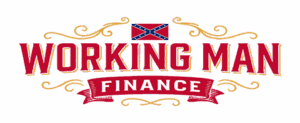In March 2003, Michael Collins Piper had the opportunity to speak at the Zayed Centre for Coordination and Follow-Up, an Arab League think tank based in Abu Dhabi, United Arab Emirates.
His lecture focused on the significant Zionist influence on the mass media, a topic that has sparked intense debate and controversy over the years.
Following the lecture, over 10,000 copies of the transcript were distributed by the American Free Press.
This discussion was later published in full in the 2011 book, Confessions of an Anti-Semite, also through American Free Press.
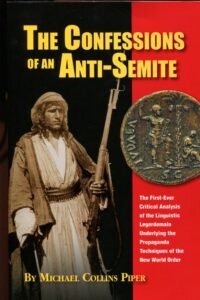
Beyond Zionist Influence: Other Factors Shaping the Media Landscape
While the Zionist agenda undoubtedly plays a role in shaping the media narrative, it’s important to recognize that other elements contribute to this complex dynamic.
Historically, when we spoke of “the media,” we referred to traditional outlets like newspapers, magazines, television, radio, mass publishing, and Hollywood.
However, the media landscape has since evolved dramatically with the rise of the internet and social media platforms like Facebook and Twitter.
This expansion has introduced new avenues for influence and control, further complicating the media’s role in society.
Uncovering the Corporate Roots of Media Control
One of the most comprehensive works on media ownership, though somewhat dated, is Hoover’s Guide to Media Companies (Reference Press, 1996).
While this volume might not provide a political analysis per say, it offers a detailed assembly of corporate data that reveals “who owns what” in the media world.
Understanding the corporate control behind major media corporations is crucial for anyone seeking to grasp the full picture of media influence and manipulation.
Despite its valuable insights, Hoover’s Guide has not received the attention it deserves within “dissident” circles.
However, I firmly believe it should be a staple in the library of every student of political affairs.
Without a solid understanding of who controls the media, it’s nearly impossible to comprehend the broader political realities that shape our world today.

The Media as the Enemy: A Controversial Standpoint
At the national weekly newspaper, the American Free Press, they adopted an unofficial slogan that perplexed many: “The Media is The Enemy.”
Understandably, this raises questions. After all, American Free Press is part of the media. So, why would a media outlet declare the media to be the enemy?
The unfortunate reality is that the media, in many ways, is the enemy.
The role of an independent voice like American Free Press is to cut through the lies perpetuated by the controlled media—those forces under the thumb of the New World Order and the plutocratic elite—and deliver the truth to the public.
While this might sound extreme, it’s a stance grounded in a growing body of evidence and a deep understanding of how media censorship operates.
Exposing Media Censorship: The Role of Project Censored
American Free Press is not alone in its mission to expose media corruption.
One notable ally in this effort is Project Censored, based at Sonoma State University in California.
Since 1976, Project Censored has been assembling a panel of distinguished media personalities and others to review the mass media’s performance each year.
This panel identifies the “most censored” stories and highlights the systemic issues contributing to media censorship.
Starting in 1994, Project Censored began publishing an annual series of books that not only detail these censored stories but also provide supplementary material on the nature of media censorship.
For those interested in exploring this further, Project Censored’s website offers a comprehensive overview of its historical work and information on the availability of its yearly volumes, which are published by Seven Stories Press.

Recognizing Excellence in Media Reporting
Michael Collins Piper former employer, The Spotlight, won two awards from Project Censored in 1990.
One of these awards was for publicizing the most censored story of the year—the revelation that the George H.W. Bush administration had given Iraqi leader Saddam Hussein a “green light” to invade Kuwait, only to later reverse course and wage war against Iraq.
The second award-winning report exposed a scheme by then-Rep. Newt Gingrich to scrap the Bill of Rights through a so-called “crime” bill, which, fortunately, was never passed.
These awards underscore the critical role independent media outlets play in challenging the dominant narratives and exposing stories that the mainstream media prefers to keep under wraps.
Corruption in the Media: A Growing Awareness
It’s no surprise that American Free Press regularly comments on the corruption within the American media.
This perception is increasingly widespread, especially as new revelations continue to emerge about the media monopoly’s complicity in perpetuating the Bush administration’s falsehoods about Saddam Hussein and his non-existent weapons of mass destruction.
What’s perhaps more surprising is the growing number of big-name journalists with roots in the “mainstream” media who are now openly acknowledging this corruption.
Into the Buzzsaw: A Behind-the-Scenes Look at Media Corruption
A fascinating exploration of media corruption can be found in the book Into the Buzzsaw: Leading Journalists Expose the Myth of a Free Press (Prometheus Books, 2002).
This book features eighteen chapters, introduced by the famed author Gore Vidal, that delve into the rampant misdeeds of both print and broadcast media.
The revelations within Buzzsaw confirm what many have long suspected—the media elite are deeply entrenched in corruption.
Vidal’s introduction reminds readers of President Bush’s warning to the press: “You better watch what you say.”
Despite this warning, the media proved itself to be a compliant lap dog for Bush and his neo-conservative allies, whom I have often referred to as “the high priests of war.”
Vidal further comments on how, throughout U.S. history, small groups have used crises to stifle free speech, with the masters of the American media being key players in this effort.
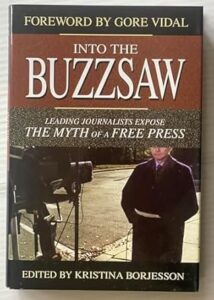
The “Buzzsaw”: A Term for Media Suppression Tactics
Buzzsaw editor Kristina Borjesson describes the “buzzsaw” as the force that can rip through you when you attempt to investigate or expose anything that large institutions—whether corporate or governmental—want to keep hidden.
The system fights back with official lies, disinformation, and stonewalling.
Journalists who dare to challenge the status quo often find themselves subjected to harassment, surveillance, and other forms of intimidation.
Borjesson herself encountered the buzzsaw while investigating the downing of TWA Flight 800 off the coast of New York.
Despite being assigned the story by her superiors, she later discovered that these same bosses were complicit in the government cover-up of the incident.
The official story claimed that the plane was accidentally shot down by a U.S. Navy missile, but this truth was something the powers-that-be wanted to suppress.
Privishing: A Lesser-Known Form of Media Censorship
One particularly fascinating chapter in Buzzsaw is Gerard Colby’s essay on “privishing,” a phenomenon where publishers suppress their own publications.
Colby recounts how his publisher, Prentice-Hall, collaborated with agents of the wealthy DuPont dynasty to suppress his book, DuPont: Behind the Nylon Curtain.
Privishing involves reducing a book’s print run, slashing its advertising budget, and canceling promotional tours to effectively kill off the publication.
Colby’s experience is not unique. Another example of privishing discussed in Buzzsaw involves a publisher’s active effort to suppress a book on the life and times of Katharine Graham, the longtime grande dame of the Washington Post media empire.
These examples illustrate the lengths to which powerful interests will go to control the narrative and suppress information that threatens their agenda.
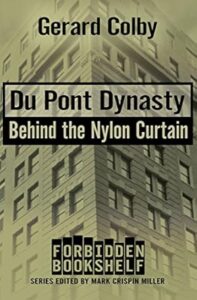
The Media’s Role in Shaping Political Realities
As we have seen, the power elite have successfully taken control of the mass media in America, using their vast financial resources to influence public opinion and shape political realities.
This control extends across newspapers, magazines, television, radio, and increasingly, the internet.
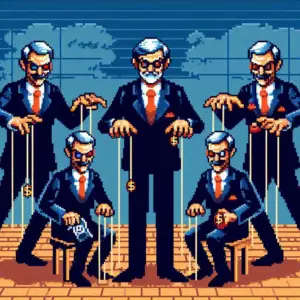
For those who find this candid discussion uncomfortable, the truth might indeed be too much to bear.
However, for those committed to understanding the full scope of media influence and corruption, it’s essential to recognize that the media we consume is often a carefully crafted tool of the powerful.
The only way to challenge this control is to stay informed, support independent media, and continue to question the narratives that are fed to us daily.
